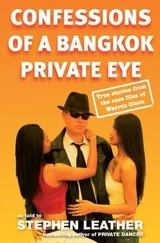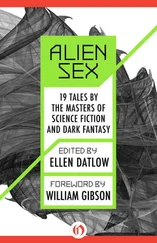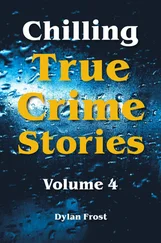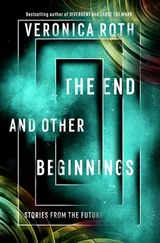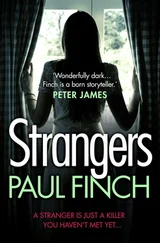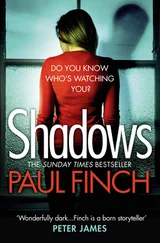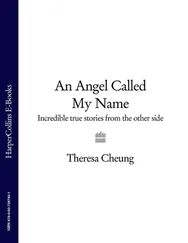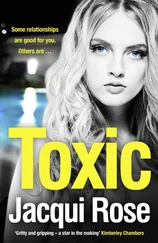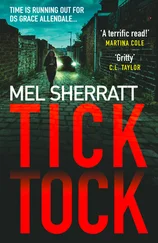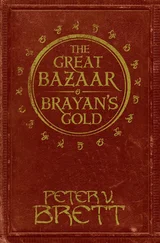Харлан Эллисон - Murder Plus - True Crime Stories From The Masters Of Detective Fiction
Здесь есть возможность читать онлайн «Харлан Эллисон - Murder Plus - True Crime Stories From The Masters Of Detective Fiction» весь текст электронной книги совершенно бесплатно (целиком полную версию без сокращений). В некоторых случаях можно слушать аудио, скачать через торрент в формате fb2 и присутствует краткое содержание. Город: New York, Год выпуска: 1992, ISBN: 1992, Издательство: Pharos Books, Жанр: Детектив, на английском языке. Описание произведения, (предисловие) а так же отзывы посетителей доступны на портале библиотеки ЛибКат.
- Название:Murder Plus: True Crime Stories From The Masters Of Detective Fiction
- Автор:
- Издательство:Pharos Books
- Жанр:
- Год:1992
- Город:New York
- ISBN:978-0-88687-662-3
- Рейтинг книги:4 / 5. Голосов: 1
-
Избранное:Добавить в избранное
- Отзывы:
-
Ваша оценка:
- 80
- 1
- 2
- 3
- 4
- 5
Murder Plus: True Crime Stories From The Masters Of Detective Fiction: краткое содержание, описание и аннотация
Предлагаем к чтению аннотацию, описание, краткое содержание или предисловие (зависит от того, что написал сам автор книги «Murder Plus: True Crime Stories From The Masters Of Detective Fiction»). Если вы не нашли необходимую информацию о книге — напишите в комментариях, мы постараемся отыскать её.
Murder Plus: True Crime Stories From The Masters Of Detective Fiction — читать онлайн бесплатно полную книгу (весь текст) целиком
Ниже представлен текст книги, разбитый по страницам. Система сохранения места последней прочитанной страницы, позволяет с удобством читать онлайн бесплатно книгу «Murder Plus: True Crime Stories From The Masters Of Detective Fiction», без необходимости каждый раз заново искать на чём Вы остановились. Поставьте закладку, и сможете в любой момент перейти на страницу, на которой закончили чтение.
Интервал:
Закладка:
Murder Plus: True Crime Stories From The Masters Of Detective Fiction
For Marla
Acknowledgments
So many people have been instrumental in helping me complete this book. To them, I am deeply indebted and sincerely grateful:
To my friends at Americas Most Wanted , especially Peter Koper and Rebecca Campany, for their editorial and emotional support.
To all my pals, far and wide. You know who you are. Especially to Robert Polito, who has not only taught me much about Jim Thompson, but who has also taught the virtues of modesty and devotion to craft. I, like many others, eagerly await his forthcoming biography on Thompson, entitled Savage Art.
To Priscilla Ridgway of the Mystery Writers of America, Mark Goodman of Green Lion Books, Linda Martin from the Reference and Bibliography section at the Library of Congress, and Martin Greenberg, the unsurpassed “King of the Anthologists.”
To my editor Eileen Schlesinger at Pharos and my agent Clyde Taylor at Curtis Brown Ltd. A writer couldn’t hope for more helpful encouragement, counsel, and insight.
To my family, Dr. Michael and Gloria Gerald, my sister Melissa, and my two grandmothers, Esther Gruber and Ruby Gerald. You’ve always been there for me, and none of this could have been accomplished without your loving support and guidance.
But most of all, to my girlfriend, Marla Weinhoff. For all those long days and nights when the last thing you wanted to talk about was blood and guts, the least I can do is dedicate this little volume to you.
Marc Gerald
Washington, D.C ., 1992
Memory and the Angels: An Introduction
Maybe you’ve seen the magazine before? You know, the one with buxom babes in skimpy get-ups holding only the most lethal weapons — AK-47s, Uzis, Glocks, Colt 45s — a different girl, a different gun. And maybe you’ve glanced at the headlines that surround the girls. Lurid, titillating rapid-fire headlines like “She was hot enough to lure her victim and COLD ENOUGH TO KILL!” or “Pittsburgh sleuths winced at the bodies and agreed it was NO WAY FOR THE SWEET OLD FOLKS TO DIE!”
Perhaps you’ve even dared to open a copy? If so, you’ve no doubt read about a handyman, a dishwasher, a baby-sitter, a schoolteacher — an everyday ordinary “Joe,” who for some reason — you fill in the blank — snapped and turned into a fiendish, raving, cold-blooded killer. And you’ve read about the hard-nosed detective who battled against high odds to bring the homicidal maniac to justice.
In case you haven’t figured it out yet, I’m talking about True Detective , a magazine not on the margins of respectable popular culture but clear off the page. Once it was a cornerstone of a popular pulp culture and featured writing by some of the boldest authors of its day. But that culture has long since vanished. And while True Detective survives, it has been relegated to the back of the lowliest newsstands, the low-rent section, just behind Tattoo Times , just in front of Superstars of Wrestling.
It wasn’t on the newsstand that I first discovered True Detective , but at the Old Worthington Barbershop on High Street back in Columbus, Ohio. I couldn’t have been more than six or seven, but I still recall the nightmares — especially one about a shoelace strangler who did in a handful of coeds out in the heartland. I was terrorized but I kept reading, and as I reached my teenage years, my parents and teachers considered sitting me down on the couch as my appreciation for the magazine’s cheap and gaudy pages grew into an obsession. Finally, twenty-two, idealistic, and fresh out of college, I ditched plans to go to graduate school so I could pursue higher learning, pulp-style. I became the managing editor of True Detective and its sister titles, Master Detective, Official Detective, Inside Detective , and Front Page Detective.
It was 1988. For most in the business of crime, that was a good year. People were desperate. Times were violent. Uncertain. The stock market had crashed. Crack had hit the streets. Dozens of serial killers stalked the country hunting for prey. Mass murderers spontaneously erupted with alarming frequency: reports had it that about once a week someone killed more than four people at a time. And there were several new and improved ways to die: at the hands of carjackers, in drive-bys, as a mushroom victim, in kiss-eye killings. Things were so bad this nation even managed to elect a president based in part on trumped-up, racist commercials featuring Willie Horton, the Massachusetts man who, as a prisoner during the term of Michael Dukakis, was given a weekend furlough while serving a sentence for first-degree murder, only to resurface in Maryland where he raped a woman and tortured her fiancé.
Struggling to keep pace with this whirling frenzy of violence the true crime genre began to flourish. Books like Ann Rule’s Small Sacrifices , Joe McGinnis’s Blind Faith , and Jack Olson’s Cold Kill soared to the top of best-seller lists. New tabloid shows dealing in murder and mayhem and scandal and sleaze, like “A Current Affair” hit television airwaves with a vengeance. So did reality-based crime shows like “Unsolved Mysteries” and “America’s Most Wanted,” which urged viewers to “Watch TV–Catch Criminals.” Miniseries “inspired by actual events” emerged as a tool for networks during sweeps periods when ratings are essential in the pricing of commercials. And two notable movies based on real life cases were theatrically released: The Thin Blue Line , Erroll Morris’s weighty documentary about a Texas man falsely imprisoned for killing a cop, and Henry: Portrait of a Serial Killer , John McNaughton’s stark, unflinching account of Henry Lee Lucas, possibly the most prolific serial killer in the history of the United States, and his furl-loving accomplice Ottis Toole.
One might think the same impulse that brought these latter-day true crime forms to prominence would’ve also benefited True Detective. After all, they were our descendants, modern equivalents of what we had been doing for a long time. It wasn’t to be.
True Detective's Manhattan headquarters were on the twentieth floor of a dilapidated, prewar Hell’s Kitchen office building. They were a grim, unhappy place, for the future of the magazine was very much in doubt.
The detective titles were owned by RGH Publications, a father and son corporation. Even without the luxury of promotion and publicity, and with covers so shoddily produced they could only scare readers off, about 500,000 diehards still purchased the magazines every month. But our readership of blue hairs, shut-ins, Greyhound bus riders, cops and axe-murderers was growing old and dying fast.
The magazines turned a profit, but it was becoming an increasingly small one, especially since our kindly, withered, little ad man now found it impossible to place ads from the tobacco and liquor companies. Instead, he searched lower. Much lower. The back page was reserved for our biggest advertiser who sold fake speed which could make you “Explode with Energy.” Other ads were 900 numbers and sex manuals for those who craved the pleasures of the flesh after reading about bone-chilling violence; mail-order courses teaching promising careers like how to be a private eye, a locksmith, a wig salesman; and for the lonely hearts, “Jewels of the Orient” and “Untouched Island Girls.”
To keep the magazine afloat, the staff was pared down to the absolute minimum. Just six editors put out five magazines a month.
My boss was Art Crockett. Pushing seventy, he wore a fedora over his horseshoe of hair and a cardigan vest over white starched shirts. He walked with a cane, had a lame eye, a wisecrack for every occasion, and a two-pack-a-day cough though he’d recently cut down to a half a pack a day. Doctor’s orders.
Читать дальшеИнтервал:
Закладка:
Похожие книги на «Murder Plus: True Crime Stories From The Masters Of Detective Fiction»
Представляем Вашему вниманию похожие книги на «Murder Plus: True Crime Stories From The Masters Of Detective Fiction» списком для выбора. Мы отобрали схожую по названию и смыслу литературу в надежде предоставить читателям больше вариантов отыскать новые, интересные, ещё непрочитанные произведения.
Обсуждение, отзывы о книге «Murder Plus: True Crime Stories From The Masters Of Detective Fiction» и просто собственные мнения читателей. Оставьте ваши комментарии, напишите, что Вы думаете о произведении, его смысле или главных героях. Укажите что конкретно понравилось, а что нет, и почему Вы так считаете.

